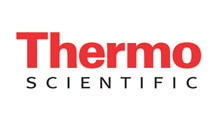Abstract
Non-covalent or native mass spectrometry holds considerable promise for routine screening of ligand libraries for binding to a target protein. Direct infusion of a protein sample in the presence of ligand from an aqueous buffer, using nano-electrospray ionisation and ‘gentle’ MS source conditions, allows detection of the protein-ligand non-covalent complex. In the context of drug discovery programmes, this technique can represent a fast, orthogonal technique for identification or validation of binding ‘hit’ compounds. Despite the attractiveness of this approach, there remain challenges with regards to the throughput, limit of detection of binding, and breadth of applicability to different samples. A model protein-ligand system, plus two drug discovery target systems, were analysed on the Exactive Plus EMR mass spectrometer, equipped with a TriVersa Nanomate chip-based infusion device for automated sample introduction. The spectra obtained showed good spectral resolution, resulting from efficient desolvation/ declustering. Glycoforms of a highly glycosylated protein could be baseline resolved, and binding of a low molecular weight fragment to this protein was observed. Ligand titrations were used to estimate binding affinity of a model system, and revealed that the interactions were maintained as expected. Additionally, sensitivity was compared to time-of-flight instruments and found to be considerably improved.






